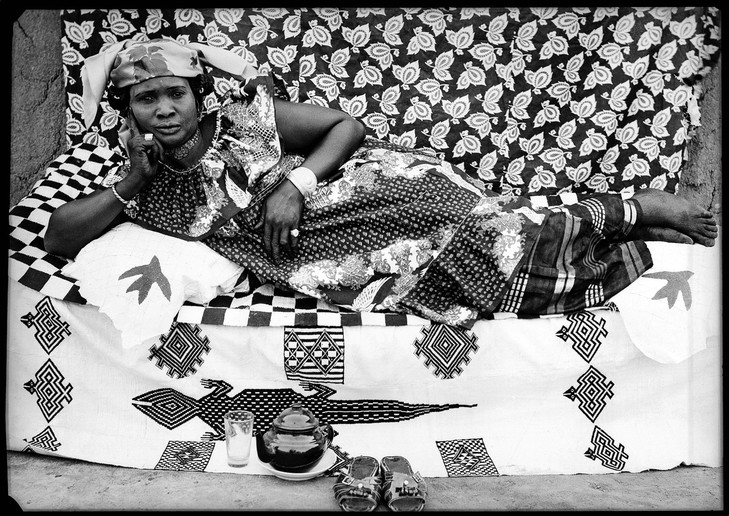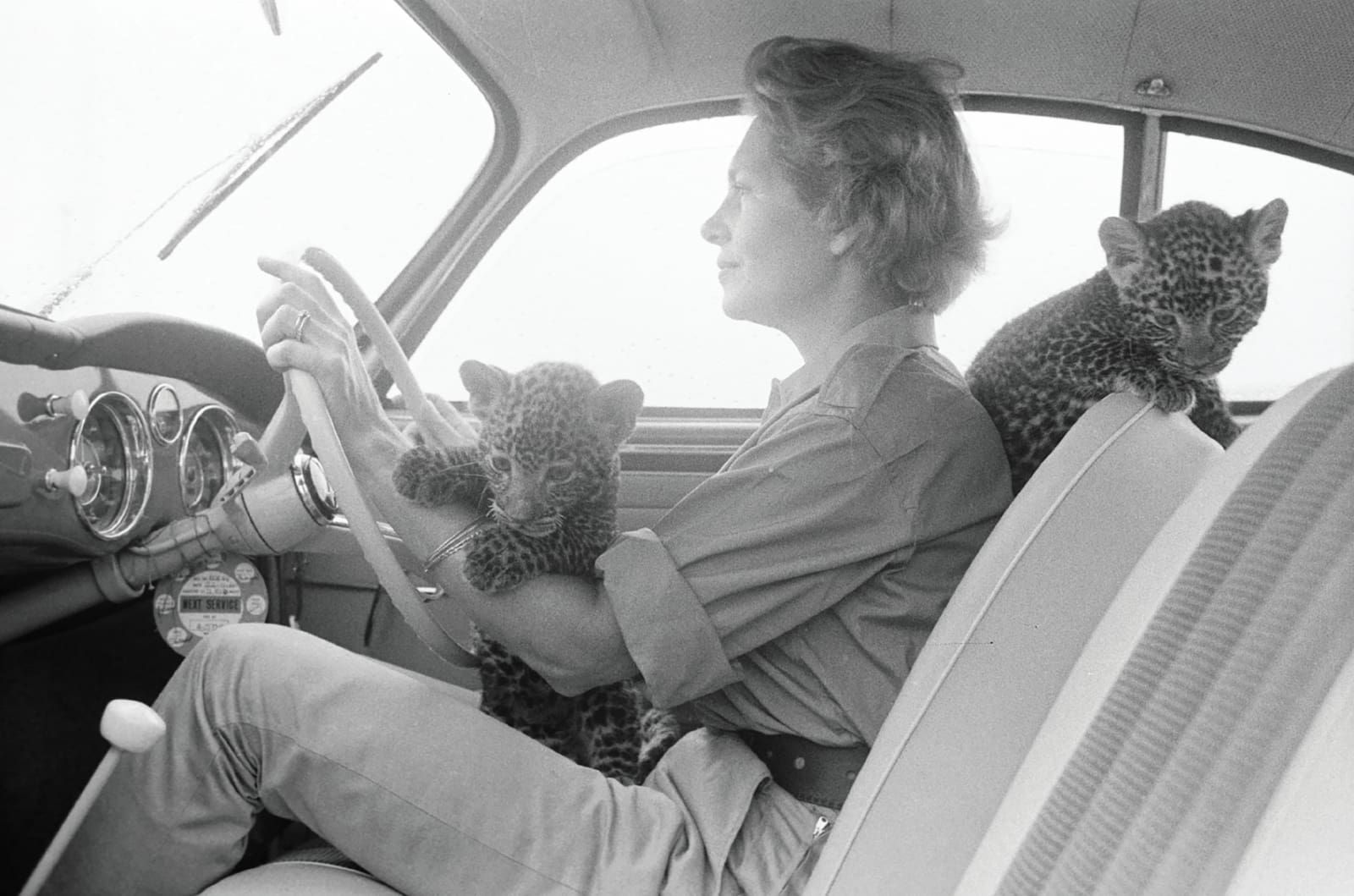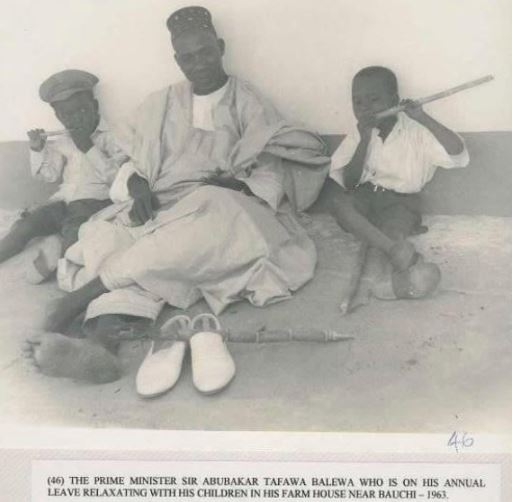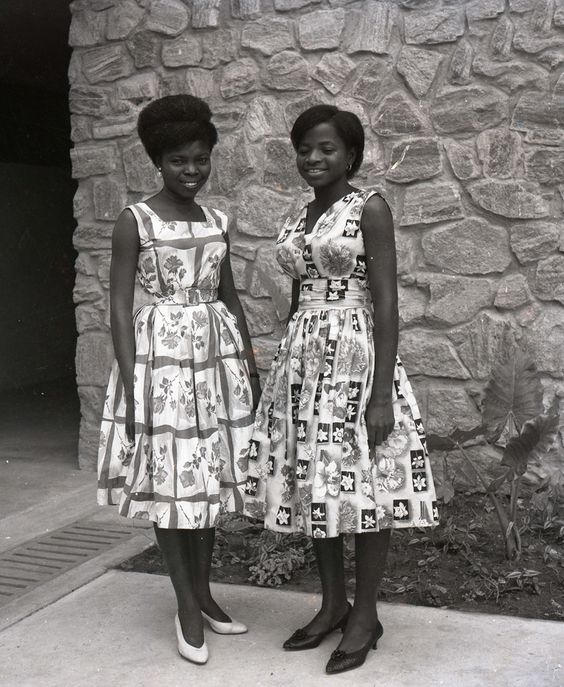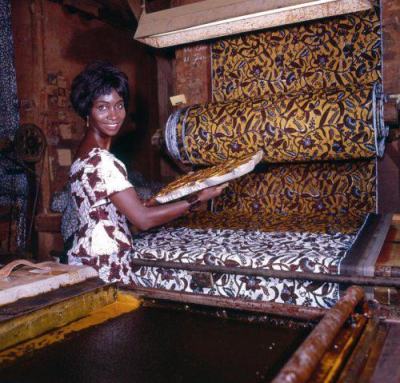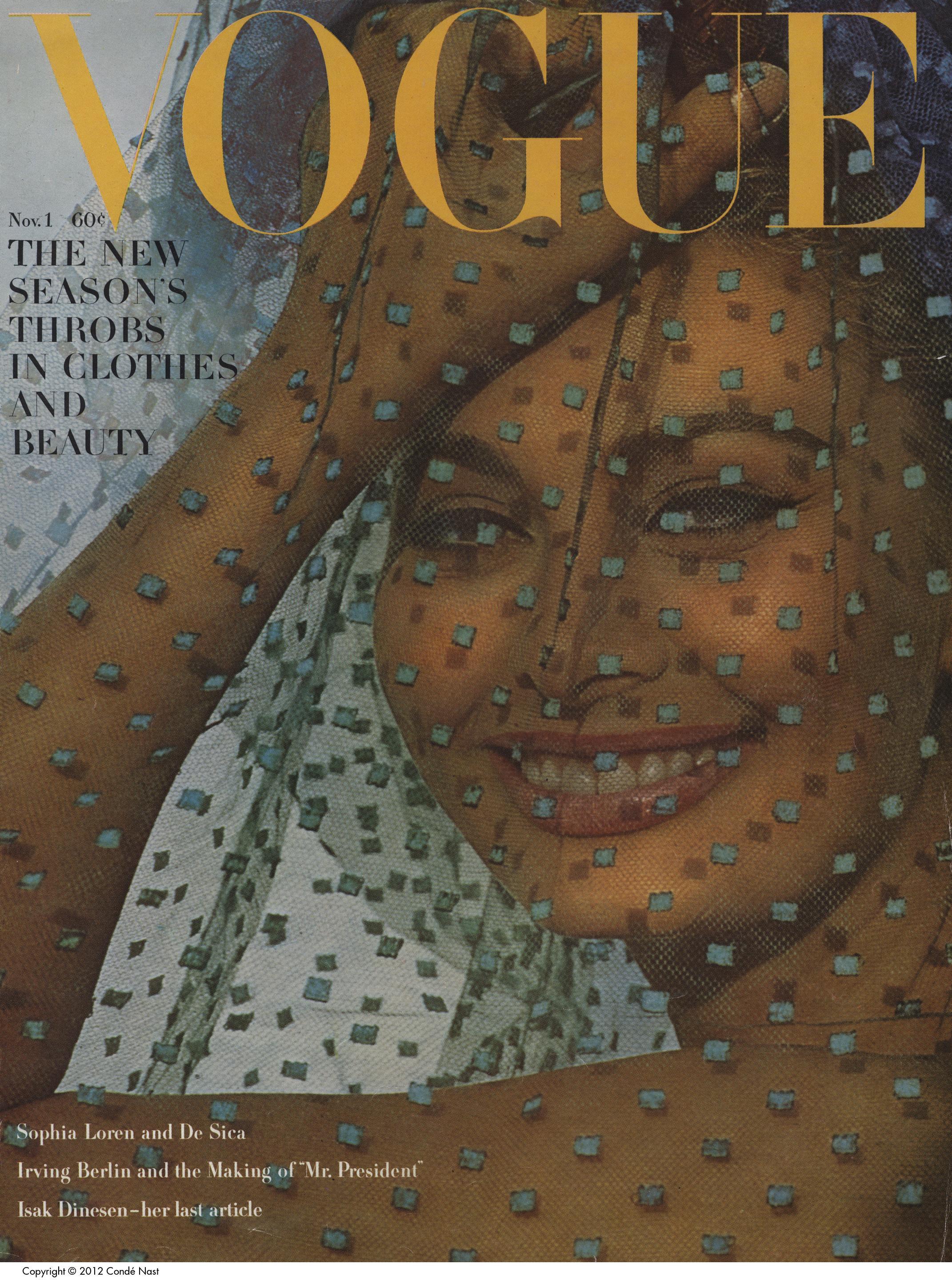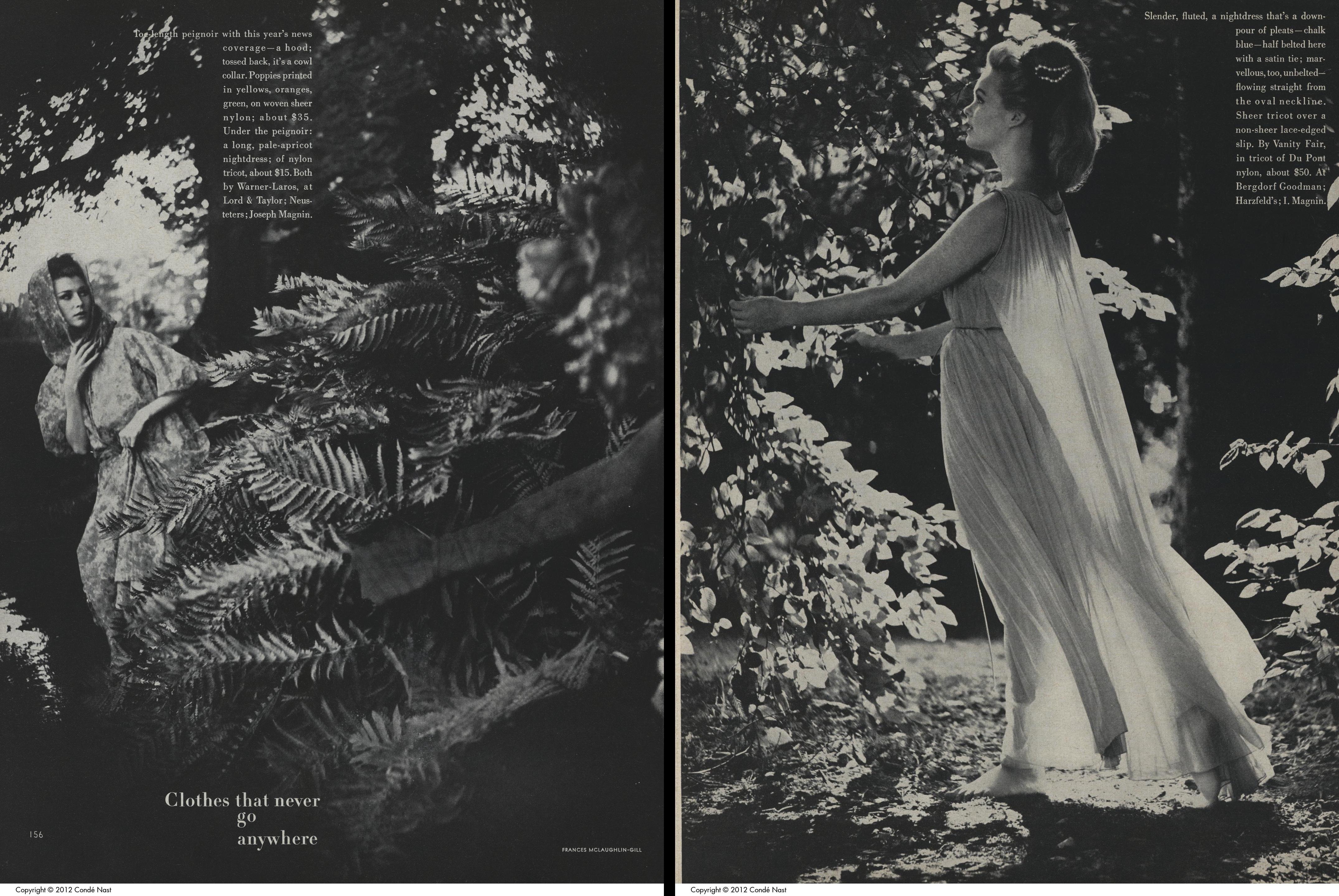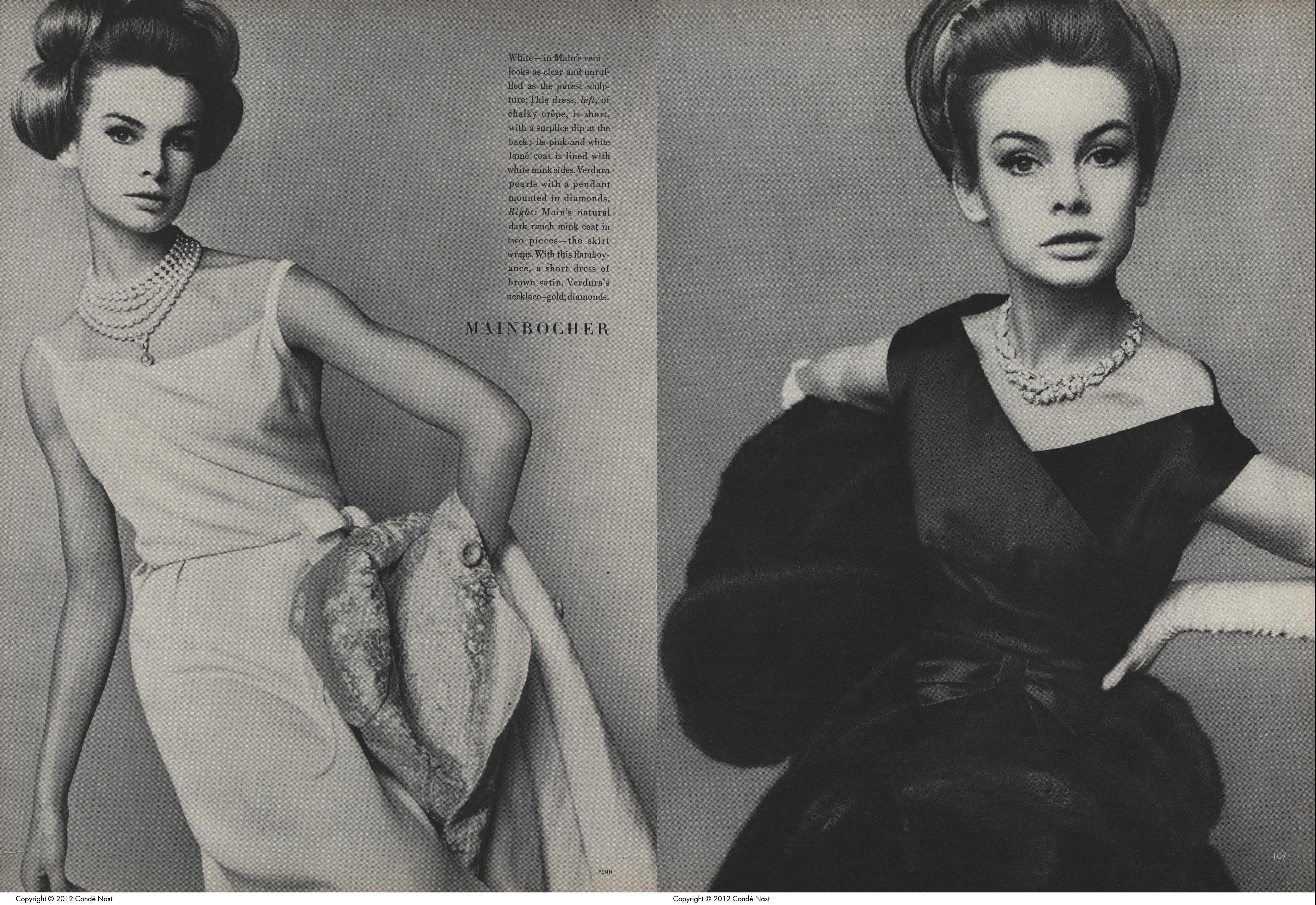
by Gwyn Conaway
The Woodstock Music and Art Fair 1969 will live on in fashion for hundreds of years. Truly, this little festival of love is already making waves within weeks of the event. Like other artist-driven movements before it–the Pre-Raphaelites, Aesthetes, and Primitifs, to name a few–the Hippie Movement will inspire again and again, living on in infamy as the pinnacle of rebellion, freedom, and youth.
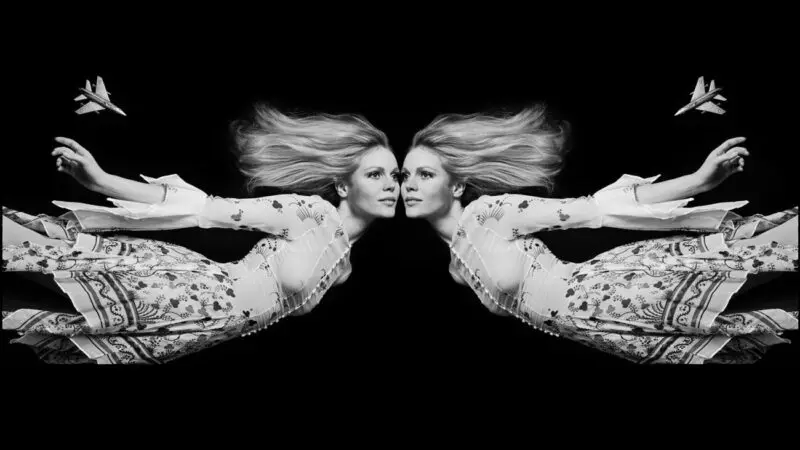
Ossie Clark Aeroplane, 1969 by Jim Lee.
Let us then take a moment to appreciate that we are living in a moment of great aesthetic change. If French Rococo had come from the cobblestone streets instead of the marble steps of the palace, this is what it might have felt like. Wondrous, confident, inclusive, worldly… Let us fall into our own naturalistic dream through a cacophony of colors and patterns, divine geometry, and just the exquisite mess of it all.
Without further ado, here are three les créateurs du jour to celebrate and thank for the vibrant fantasy that is 1969.

Ossie Clark has said that this photograph is meant to comment on soldiers that fool around and don’t take the war seriously. Celia Birtwell represents a peasant girl being sexually assaulted by a soldier holding a gun to her thigh while wearing one of Ossie’s floral dresses, 1969.
Ossie Clark is making the biggest splash of his career right now, and for good reason. Photographer Jim Lee helped bring his vision to life for the editorial series entitled 'Vietnam', a brutal commentary on both the realities of the war and his ardent hope for peace. His other photoworks with Jim Lee depict a similar combination of violence and vibrance that feel both glamorous and political. 'Target' uses the same bright, primary palette, but is reminiscent of suicide bombers. Ossie Clark has mentioned that his intent with the photo was to make it appear as if Celia Birtwell had survived a nosedive unscathed.
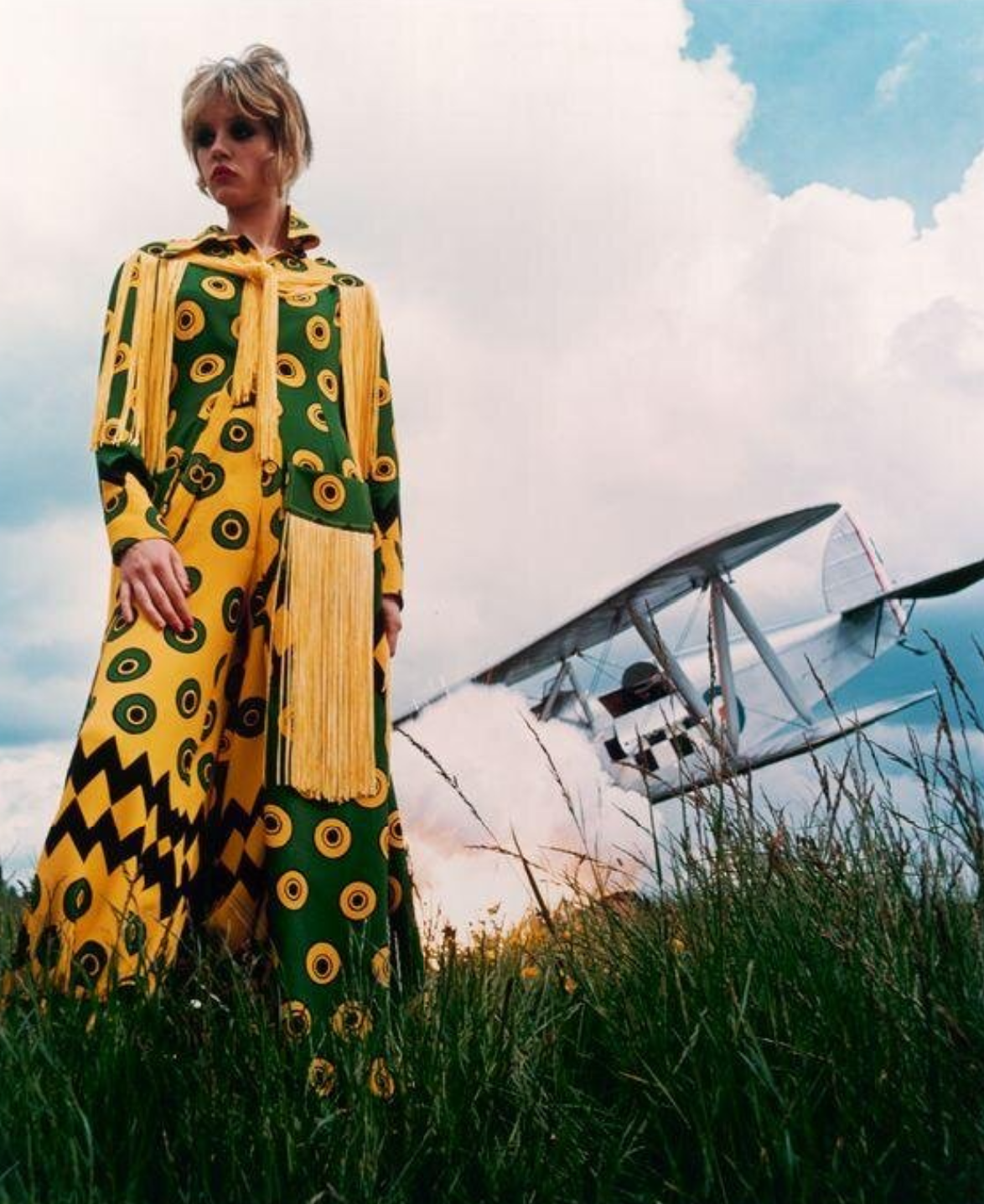
Celia Birtwell wearing an Ossie kaftan dress in parti color yellow and green. Interestingly, the fourth attempt at this photograph left the detonation expert badly burned.
Ossie Clark would not be complete, however, without his life and design partner, Celia Birtwell. Her Botticelli print has inspired much of Ossie’s fashion this year, making its way onto trousers, peasant tops, kaftans, and gowns. She is the mastermind behind the “floating” textiles that make his designs so bold and nymph-like.

The “Botticelli” print by Celia Birtwell on Ossie Clark’s chiffon and satin trouser suit, 1969.
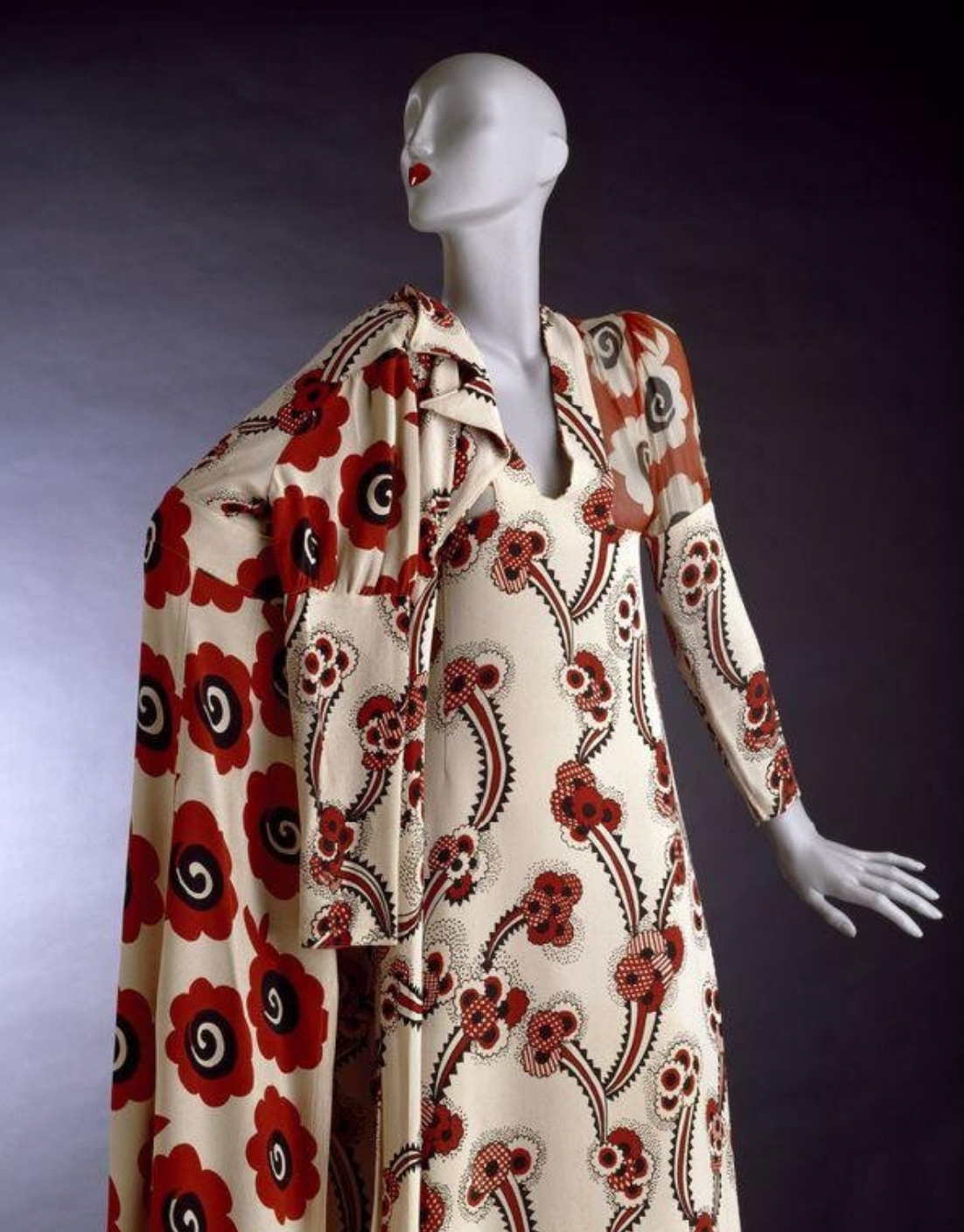
The “Floating Daisy” and “Poppy” prints by Celia Birtwell on Ossie Clark’s crepe and chiffon evening dress and coat, 1969.
Zandra Rhodes is another exceptional designer with an eye for color that simply glows with life. Her first collection came out this year, titled “The Knitted Circle.” The stand-out piece from her very first collection is the jaw-dropping Butterfly Coat. This coat made of golden wool with a quilted collar that curls away from the neck like butterfly wings, dragged towards the ground with elegant beaded cords. The bodice’s embroidery is a trompe l’oeil print, which keeps its volume and shape from becoming too heavy. And the skirt’s rose and diamond print is reminiscent of gardens and tea in a charming, youthful way.

The Butterfly Coat’s skirt is a full circle gathered into a fitted bust, emblematic of the circular tailoring theme that Rhodes uses across the entire collection, 1969.
Other garments in the collection are ethereal and frothy, following the theme of full circle cutting in the skirts and balloon sleeves. The circular motif is inviting but powerful. When combined with Rhodes’ deft hand at color, it speaks to the energy of young women and their audacity to be happy as themselves.

Detail of the Butterfly Coat by Zandra Rhodes, 1969.
Let us end this little tour with a man of many talents. Giorgio di Sant’Angelo has apprenticed under Pablo Picasso and Walt Disney, worked as a textile designer for furniture, and studied industrial design. His personality is big and his look cherubic. Most stunning, though, is that his work embodies it all.

Sant’Angelo in 1968 photographed with a model draped in his scarves.
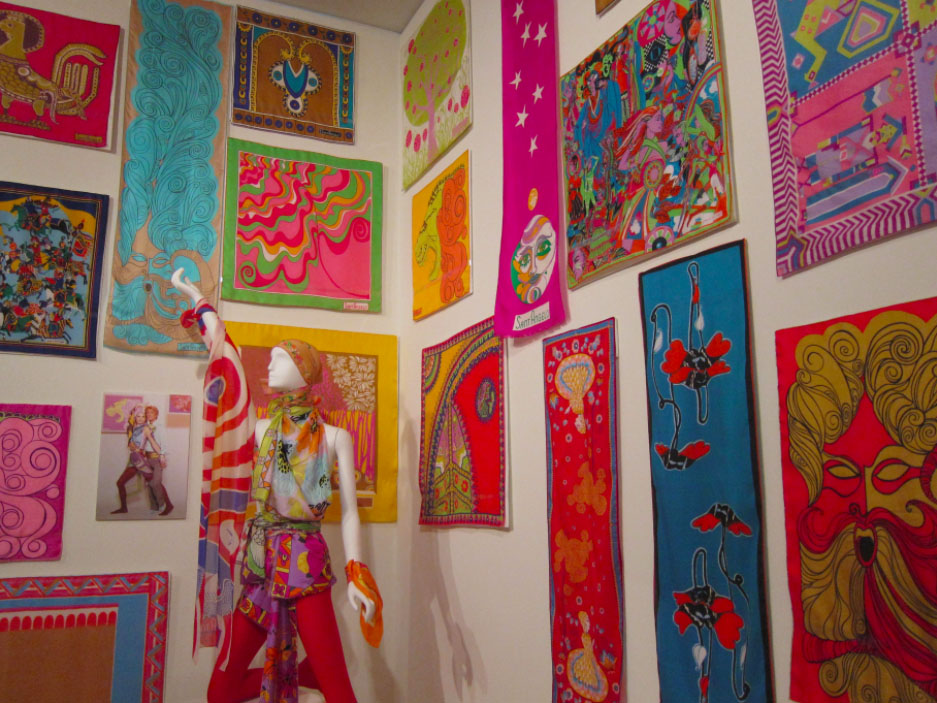
The scarf wall at the Phoenix Art Museum.
Sant’Angelo is daring and bold, but there’s an inherent softness to his work. He combines organic subjects with psychedelic color, and geometry with hand-drawn repetition rather than precision. There’s a speculative element to his work that makes one think he wishes to drape you in dreams rather than necessarily create clothing.
Even his heavier textiles maintain the dreamlike crossroads between geometry and mysticism. For his photoshoot with Veruschka for Vogue in 1968, he supposedly took only fabrics and jewelry, draping each frame by hand. The result is a mesmerizing dance of triangles and circles.
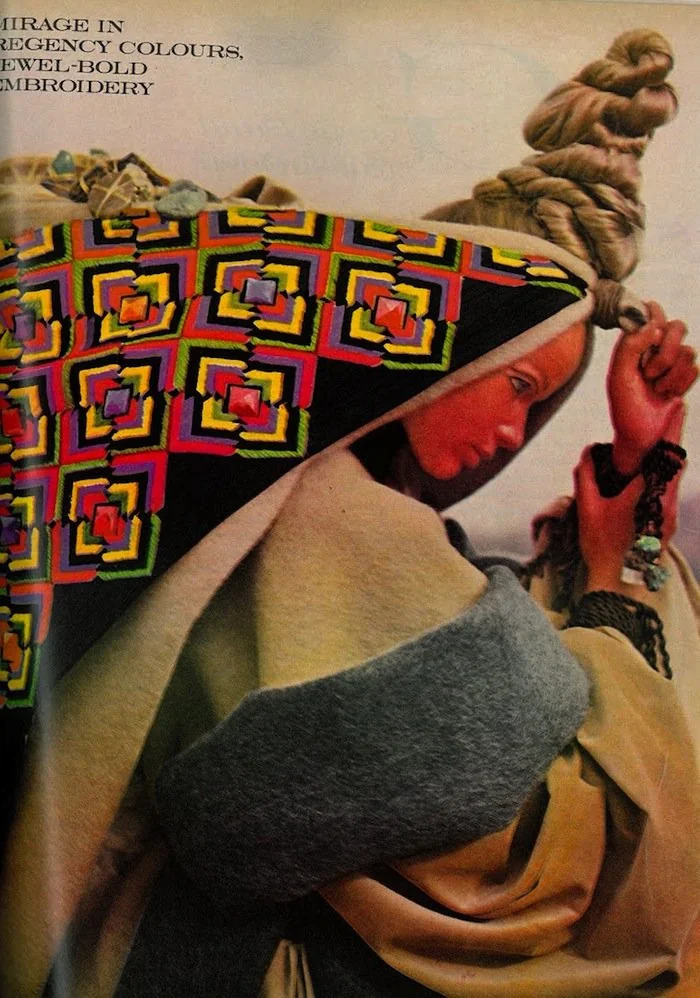

The above photographs are from the Vogue desert photoshoot, photographed by Franco Rubartelli.
Enjoy these watershed years, my friends! We are seeing the future being shaped as we live and breathe. What will the Hippie movement lead to next? Fops and dandies? Peasant dresses and pastorales? It will seep into our daily lives, of that there is no question.

![[September 18, 1969] Neo-Rococo Dreaming](https://galacticjourney.org/wp-content/uploads/2024/09/1_JimLee-OssieClark-Aeroplane1969_crop-800x450.jpeg-1-672x372.webp)
![[December 14, 1968] The Emperor's New Nehru](https://galacticjourney.org/wp-content/uploads/2023/12/Cardin-600x372.jpg)

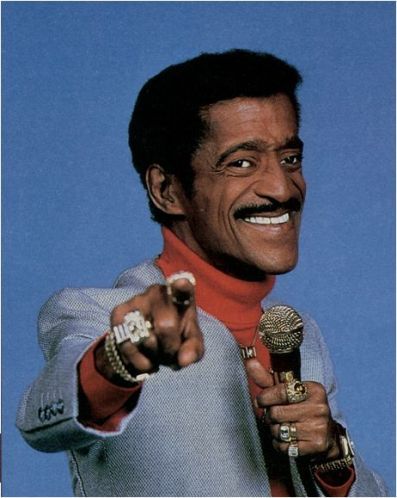


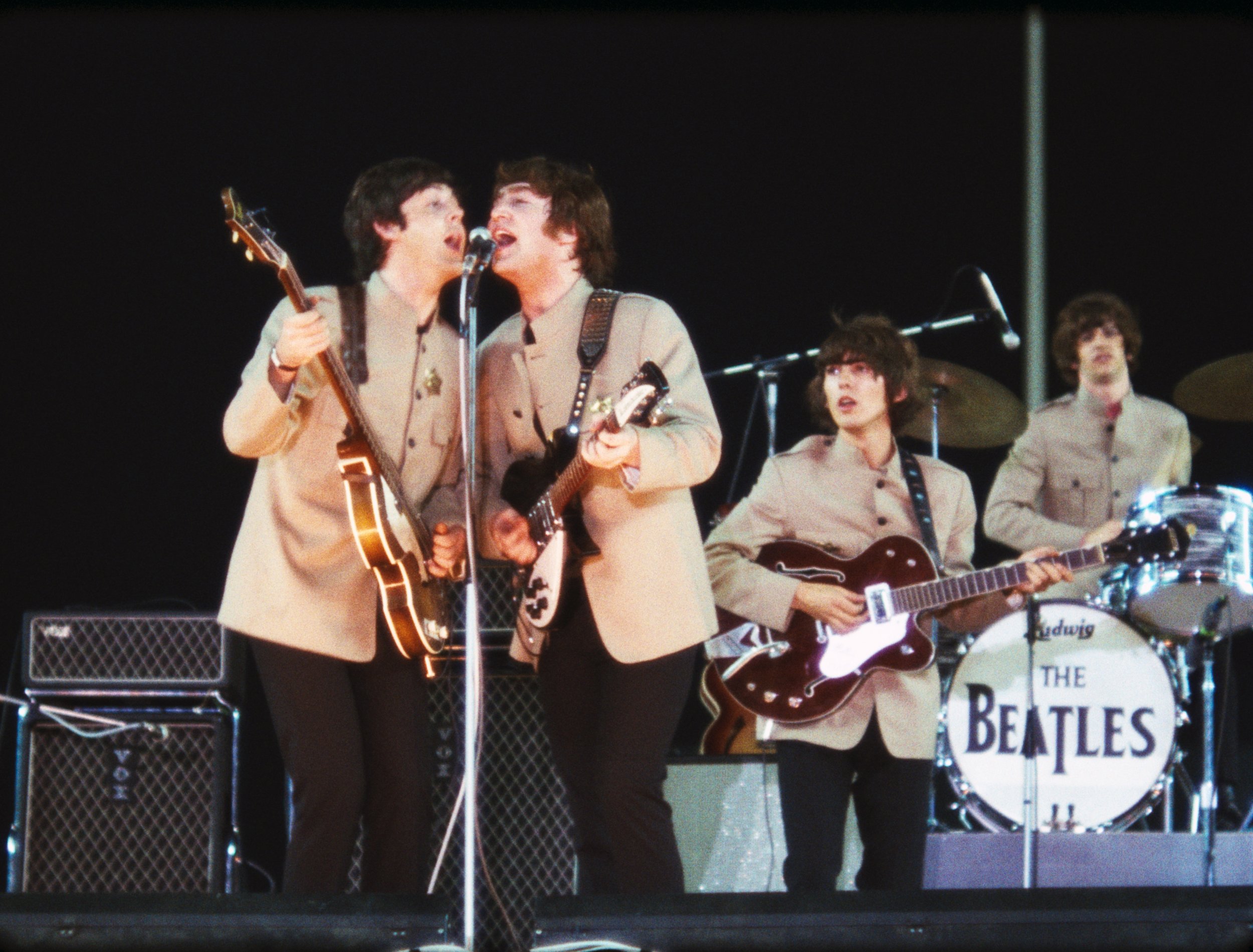
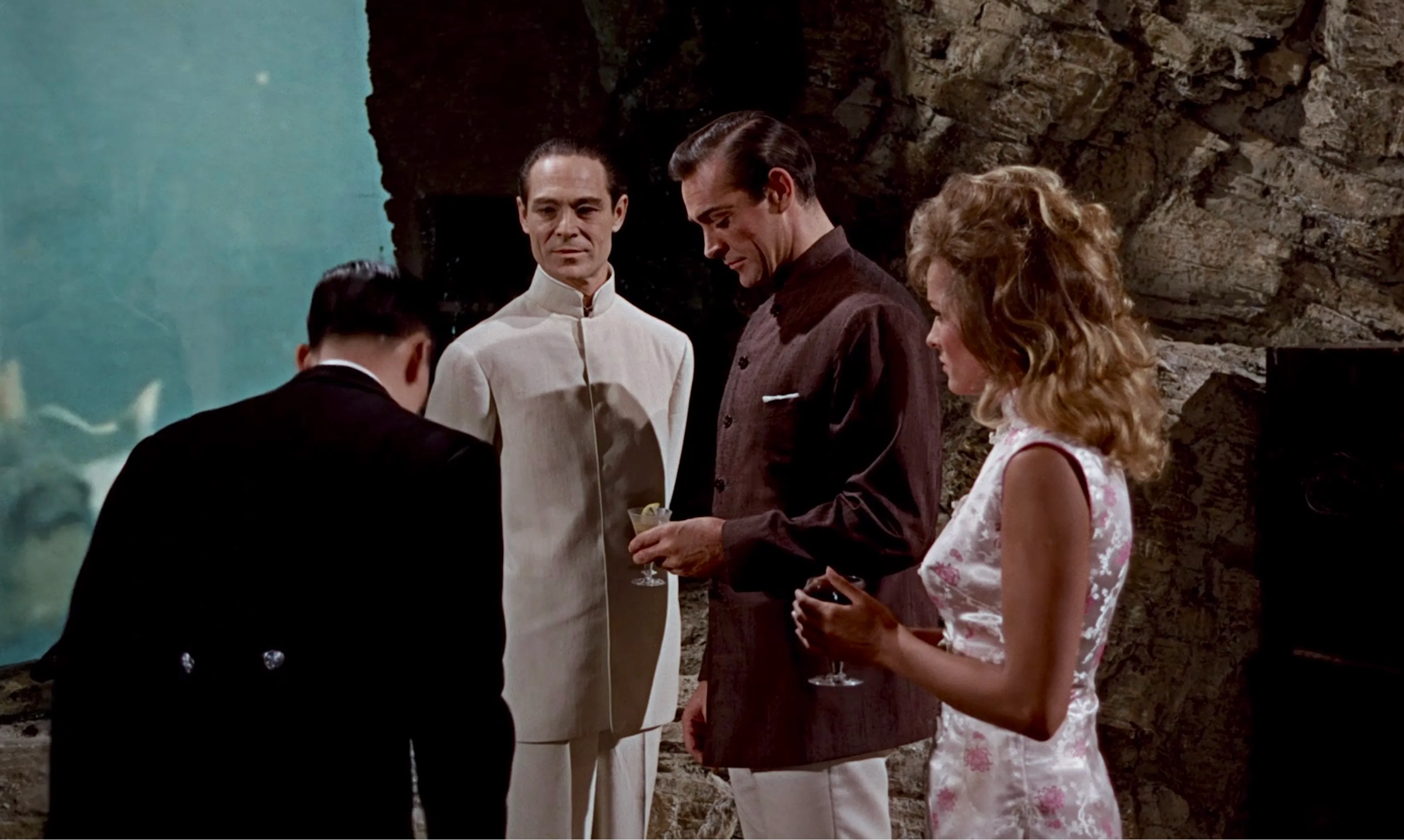

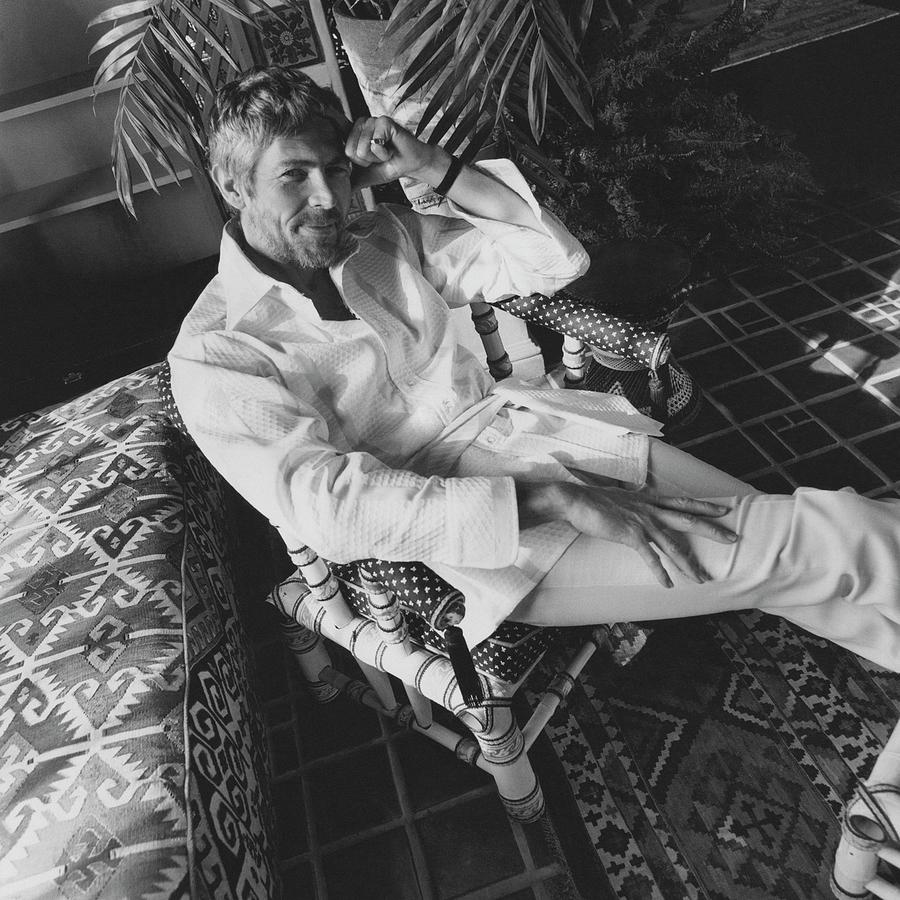


![[March 24, 1968] A Frivolous Escape into Fashion](https://galacticjourney.org/wp-content/uploads/2023/03/pg-2-scaled.jpg)




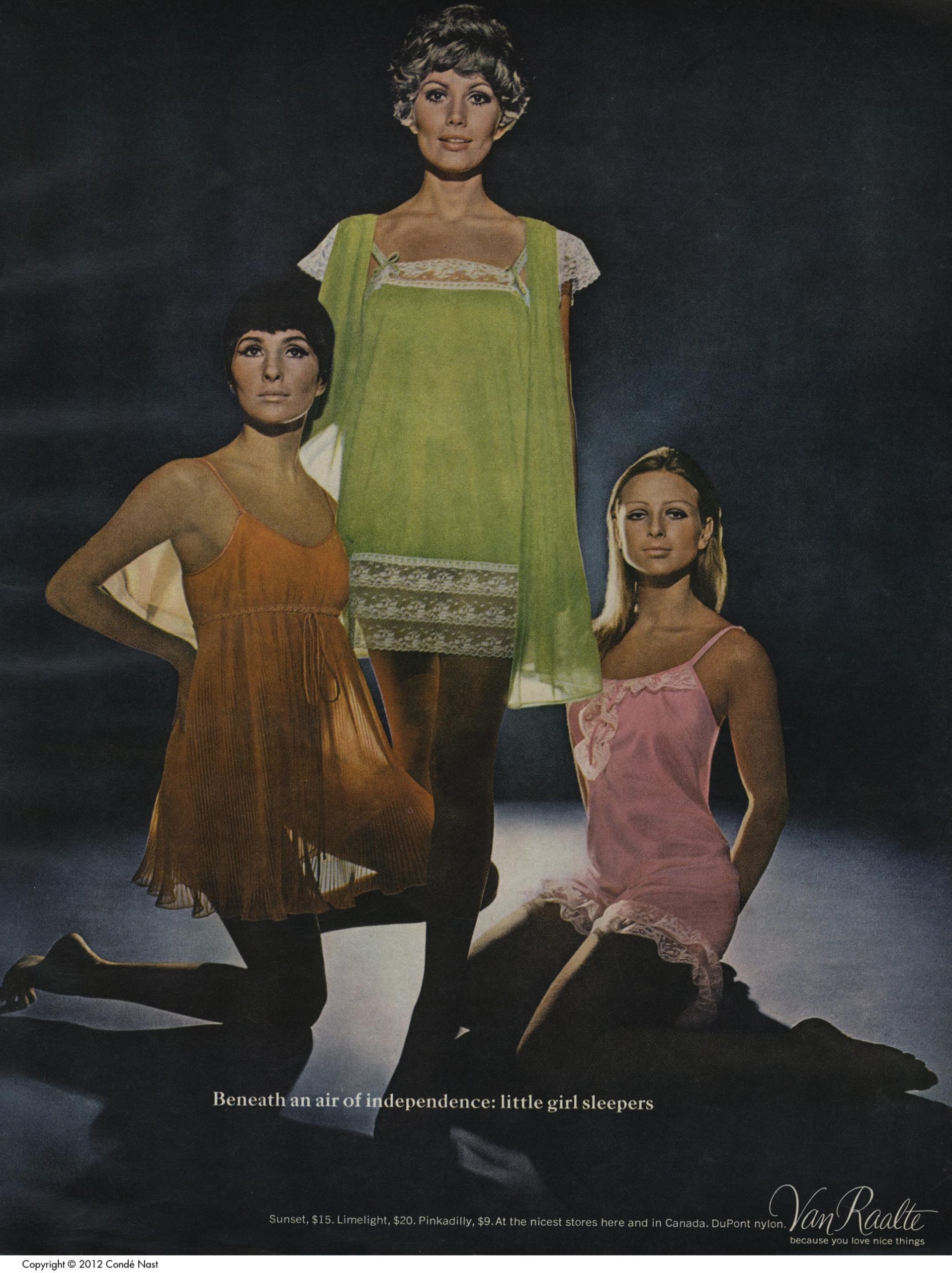
![[September 20th, 1967] Twiggy: Face of the 60s](https://galacticjourney.org/wp-content/uploads/2022/09/Twiggy-Vogue-1967-Photo-Cecil-Beaton-672x372.jpg)
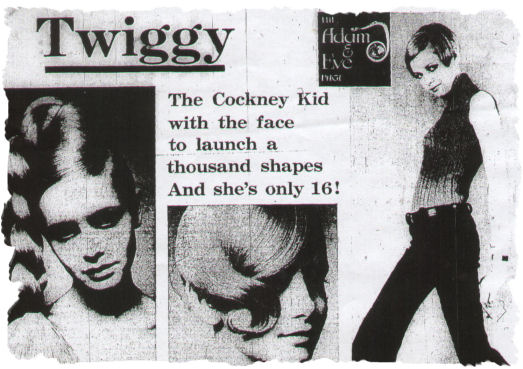





![[April 29, 1966] Young and Bold: Photographer David Bailey](https://galacticjourney.org/wp-content/uploads/2021/04/beaton_puttnam_nureyev-672x372.jpg)








![[February 2nd, 1965] Spring is a State of Mind.](https://galacticjourney.org/wp-content/uploads/2020/01/02-672x372.jpg)





